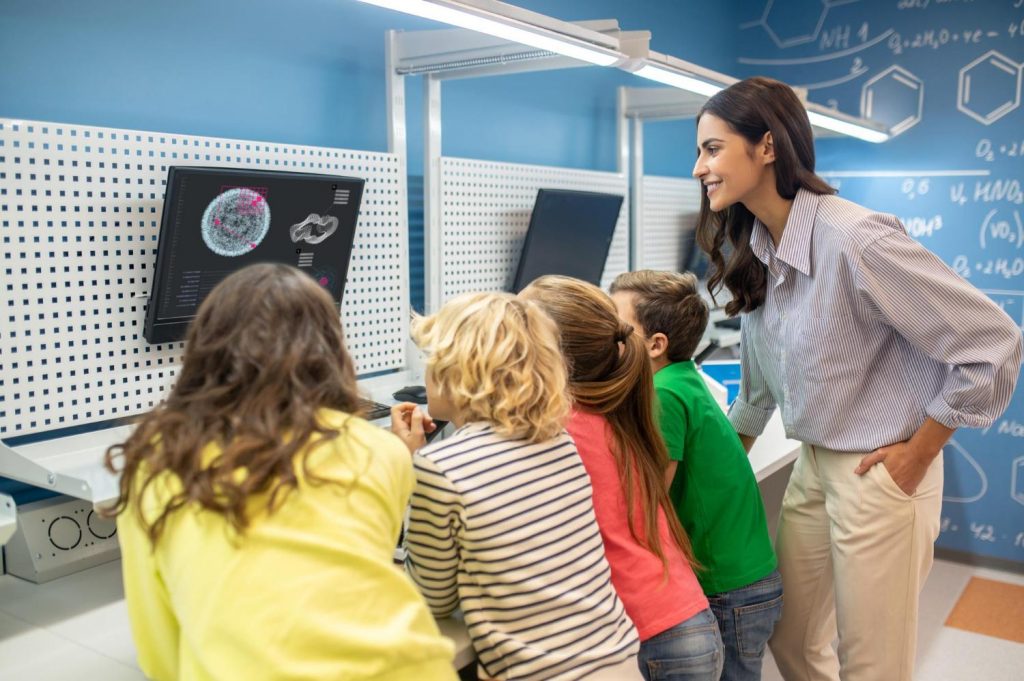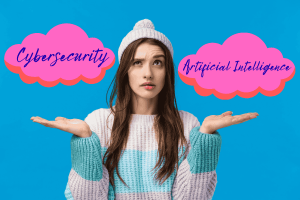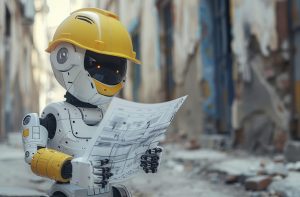Introduction
Education has always been at the forefront of human progress, shaping minds and empowering individuals to reach their full potential. With the rapid advancements in technology, particularly in the field of Artificial Intelligence (AI), a new era of educational innovation is upon us.
AI has evolved far past the scratch-based, simple learning AIs in times past. Artificial Intelligence today is poised to revolutionize education around the world by offering personalized learning experiences, enhancing teaching methods, speeding up business processes, and fostering creativity, even outside of the field of computer science.
As research on the field of AI continues to progress, and more data is found on the system and method through which AI is utilized, AI becomes more and more relevant to the modern educational context.
In this article, we will delve into the transformative power of Artificial Intelligence in education and explore how Text-to-Image AI technology can further amplify its impact.
The Benefits of Artificial Intelligence in Education
Personalized Learning
One of the most significant advantages of artificial intelligence in education is the ability to provide personalized learning experiences. Through its machine learning capabilities, AI tools are able to provide AI-generated images and content that can be beneficial in the field of education.
Adaptive, deep learning platforms and intelligent tutoring systems utilize AI tools and algorithms to analyze student data and tailor educational content to individual needs and preferences.
AI technologies can also contribute to the creation of knowledge databases, which are important storehouses of information and knowledge that students can consult in order to further enhance their learning. Digital libraries are one such example of a data system that AI can help compile and manage.
This data is then used by data scientists and computer scientists around the world to design even better AI tools and systems and further refine the deep learning process of artificial intelligence to further enhance the learning experience.
Through real-time assessment and feedback mechanisms, artificial intelligence can identify areas of strengths and weaknesses, enabling educators to begin creating personalized, data-centered learning paths for each student. This approach not only enhances academic performance but also boosts student motivation and engagement.
Enhanced Teaching Methods
Artificial Intelligence empowers educators around the world by offering intelligent virtual assistants that can automate administrative tasks, streamline workflows, and assist in instructional delivery.
Using an AI-powered grading system, teachers can save valuable time and allocate more resources toward personalized instruction and mentorship. Additionally, augmented reality (AR) and virtual reality (VR) applications provide immersive learning experiences, enabling students to explore complex concepts in a visual and interactive manner.
Such innovative teaching methods only grow in relevance with time as the natural language processing ability of AI tools becomes more sophisticated.
Thus, such tools foster ever deeper understanding and engagement among students, especially amongst the increasingly technology and internet-centered generations of today.
Improving Accessibility and Inclusivity
AI plays a crucial role in improving accessibility and inclusivity in world education. Tools based on artificial intelligence systems enable students with disabilities to overcome barriers and access educational content more effectively.
One example of how speech recognition technology can transcribe lectures in real-time is in assisting students with hearing impairments. By taking in large volumes of data through speech and image recognition (which is part of the process of machine learning that can be initiated by developers themselves), speech recognition technology can aid students with hearing impairments by providing text transcriptions of a lesson, or subtitles in the case of a video lesson.
Language translation and transcription services break down language barriers, ensuring that non-native speakers can fully participate in classroom discussions and even practice another language, whenever appropriate, at the same time.
These services only become more sophisticated and helpful as artificial intelligence further develops in its natural language processing ability through machine learning and further iterations by developers.
By utilizing AI, educational institutions can promote equal opportunities for all students, regardless of their backgrounds or abilities.
Unleashing Creativity with Text-to-Image AI Technology
Text-to-Image AI technology represents a remarkable leap forward in AI systems within education. This technology utilizes advanced algorithms to generate images based on text input, utilizing various art styles and available data to create images according to a person’s wishes. Examples of such technology that is used to generate AI art include Midjourney and DALL-E.
By bridging the gap between textual and visual content, AI work through Text-to-Image technology opens up new avenues for creativity and imagination. Through a type of machine learning process called deep learning, these AI tools can learn from the feedback data provided for them to further focus the quality of AI-generated images and their art styles to better match the educational and, indeed, even business needs of the user.
One such example of such learning is the idea of “teaching” an AI image generator, involving the introduction of various art pieces to help the AI image generator “learn” a particular art style. By doing so, the AI image generator is able to create an even more faithful and high quality image using a particular art style and following the given prompts. Many similar practices exist when it comes to producing even better AI-generated images.
While the complicated software can seem like quite an intimidating black box of technology at first glance, the rapid machine learning capabilities of artificial intelligence tools and their status as being relatively autonomous vehicles in terms of their operation means that one only needs to be pointed in the right direction to begin using artificial intelligence in a way that is both convenient and effective.
With the help of artificial intelligence to create images and visual content, educational materials can be enriched with visually appealing images, infographics, and diagrams, making them more engaging and conducive to learning. Finding the perfect image for a particular lesson plan or presentation becomes even easier than ever before with the help of AI tools.
Visual learners, in particular, benefit from tools like AI-image generators, as they enhance their comprehension and retention of information by creating AI-generated images that serve as visual learning aids for their study. Students with particular needs, such as students with disabilities or any other factors that may affect their learning, are also greatly helped by the use of AI-generated images in learning systems.
Furthermore, the more these technologies are used and in more varied situations, the more time the AI tools have to go through various processes of machine learning, allowing them to become more and more relevant in more and more varied situations. Research is always being done in order to obtain data to continue developing AI systems and technologies to help make AI tools become even more effective as a whole.
Ethical Considerations and Challenges
While Artificial Intelligence and Text-to-Image AI technology offers immense potential, there are ethical considerations and complex problems that must be addressed in their use, especially when it comes to AI-generated images.
Due to the nature of how AI image generator technologies operate as autonomous vehicles of image generation, and the rapid advancement of natural language processing, machine learning, and deep learning ability of artificial intelligence as a whole, it is unavoidable that any given AI-generated image will take art styles and ideas from a creative project or artist online that best suits the text prompt given to it. This has resulted in massive amounts of controversy surrounding the legal purpose and use of AI-generated images and content in creative spaces, with concerns about intellectual rights and even data privacy being voiced by many people.
AI text is also subject to some criticism as well, in particular due to its ease of use meaning that it is easy for one to use AI to circumvent particular requirements set by teachers or employers.
As such, the value of artificial intelligence in workforce development and educational contexts is always in question; is it useful enough, in the end, to render the risk of students cheating by having the artificial intelligence do their work for them? Is there a way to mitigate these risks?
With these issues in mind, it is the goal of AI policy as it develops to ensure the ethical use of AI-generated images, and in doing so prevent issues such as copyright infringement, fraudulent activities, and other types of suspicious activity, as well as protect the intellectual property rights of creatives both online and offline.
Furthermore, biases and stereotypes in the image generation algorithms used to create images need to be mitigated to ensure fair, respectful, and inclusive representations as artificial intelligence continues to develop its ability to generate images. It is doubly important to manage these biases to ensure that the machine learning process does not progress in a direction that is easily abusable.
It is vital to strike a balance between the complicated software of artificial intelligence automation and the preservation of human capabilities, creativity and expertise in educational settings. After all, artificial intelligence and machine learning in general is intended to provide better accessibility and quality of life for its users, not completely replace the need for work that requires a more human touch.
AI Adoption in Education: Case Studies and Success Stories
Across the globe, educational institutions have embraced artificial intelligence as examples of emerging technologies that can be used to enhance teaching and learning experiences.
For example, many universities and schools have begun to use AI-powered chatbots, which provide immediate assistance to students and answer their queries round the clock. When a student provides a text prompt or query, the chatbot creates an AI text output answering or responding to the given text prompt. These virtual assistants significantly reduce response time and allow educators to focus on more complex tasks that require human intervention.
Some educators even use artificial intelligence-based systems for things such as fraud detection, facilitating class discussion of complex problems introduced in the lesson of the day, or even in the formatting of student outputs based on the standards set by the teacher for the given course.
Moreover, numerous data science studies have shown improved student engagement, personalized instruction, and enhanced academic outcomes through the integration of AI in various subjects and learning environments.
It is plain to see, whether through big data analytics articles or even simply through seeing artificial intelligence in action, that AI tools have been a catalyst of great strides in the quality of life of educators and students. Even more than that, the swift course that the evolution of AI technologies takes means that the latest advancements in AI technologies are always timely and based on modern ideas, issues, and systems.
Conclusion
As we look toward the future of education, the emerging technology of artificial intelligence stands as a powerful catalyst for change in our everyday lives. The benefits of artificial intelligence for education, such as personalized learning, enhanced teaching methods, and improved accessibility, are truly transformative.
These benefits do not only manifest in one or two ways – whether it is through AI-generated images, AI text transcripts of lessons, or other innovative ideas, AI tools are always growing and evolving as a system.
When combined with Text-to-Image technology, artificial intelligence opens up new frontiers of creativity and imagination, enriching educational materials and fostering deeper understanding. Embrace the opportunities offered by AI-PRO.org, where cutting-edge AI solutions are available through their Basic and Pro subscription plans. Join the educational revolution powered by AI, and together, let’s unlock the full potential of learners around the world.
Ready to embrace the power of AI in education? Visit AI-PRO.org today to explore their Basic and Pro subscription plans and unlock a world of innovative AI solutions tailored for educators and students. Revolutionize the way you teach and learn with AI-PRO.org.
FAQs
Q1: Can AI replace teachers in the classroom?
A1: AI tools are not designed to replace teachers but rather to enhance their capabilities. AI can automate administrative tasks, provide personalized feedback, and offer additional support where necessary.
It complements the role of teachers, allowing them to spend time designing more effective lesson plans and focus on individualized instruction and fostering student growth.
Q2: How does Text-to-Image AI technology work?
A2: Text-to-Image AI technology uses advanced AI algorithms to generate images – referred to as an AI-generated image – based on a text prompt. These systems process and analyze the text prompt (or prompts) and generate corresponding images or visual elements, making educational materials more visually engaging and facilitating better comprehension.
Through a type of machine learning called deep learning, artificial intelligence then proceeds to improve upon its output in future iterations, creating AI-generated images that are more faithful and relevant to the text prompt provided to the AI.
Q3: How can AI improve accessibility for students with disabilities?
A3: AI-powered tools can support students with disabilities by providing real-time transcription services, speech recognition, and language translation. These technologies break down barriers and ensure equal access to educational content, fostering inclusivity in the learning environment.
Q4: Are AI art generators suitable for all grade levels?
A4: Yes, AI art generators can be adapted to support various grade levels, providing age-appropriate prompts and experiences. Educators can then use AI art generators in a way that best suits the learning needs of their students.
Q5: Can AI art generators replace traditional art education?
A5: No, AI art generators should not replace traditional art education. They should be seen as complementary tools that enhance the learning experience, promoting creativity and facilitating exploration.
In fact, they are most effectively used in traditional art education as a source of resources for artistic inspiration – for example, a lesson on art styles practiced by renaissance artists may benefit from an AI image generator creating a model that is different from the existing artworks that are available for view, both for accessibility purposes and to see how that art style would handle various elements of artwork, or to outline a particular part of that artist’s creative process.
Q6: How can educators address biases in AI-generated art?
A6: Educators should facilitate discussions on biases and representation, encouraging students to critically analyze and question the outputs of AI art generators. By promoting awareness and inclusivity, biases can be identified and challenged, and the process of learning can be enriched to become more diverse.





